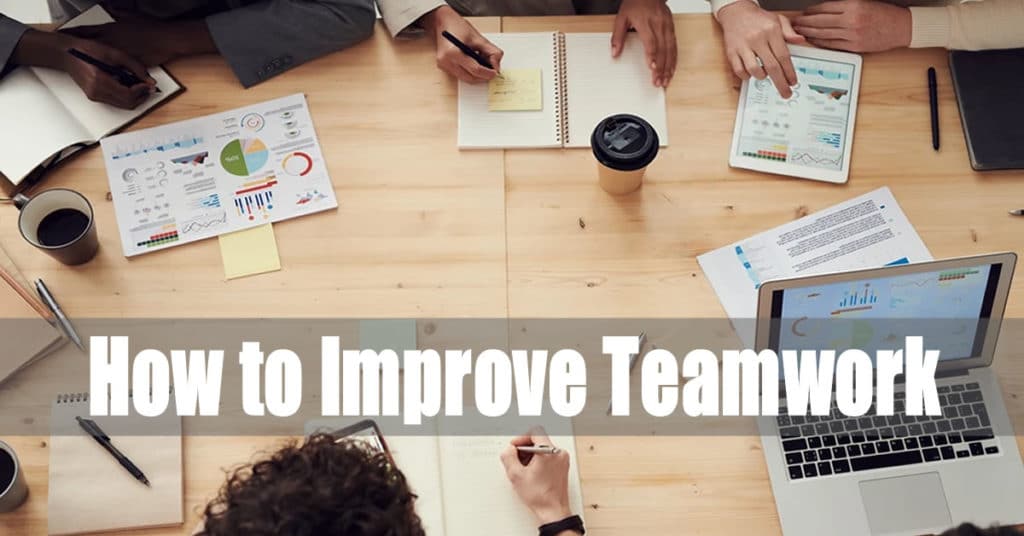Promoting and enhancing diversity, equity, and inclusion (DE&I) in the workplace is vital for all firms. In fact, DE&I is no longer considered a corporate trend but rather a business imperative for global organizations.
And why is this so? In addition to being simply the right thing to do, experts state that a diverse, equal, and inclusive labor force is more productive, creative, and better performing.
In fact, research indicates that diverse firms are 35% more likely to perform better, 70% more likely to capture new markets, and 87% better at decision making. What’s more, inclusive organizations are 1.7x more innovative and 120% more likely to achieve their financial goals.
Thus, having a diverse, equal, and inclusive organization should be a no-brainer if you want your organization to succeed. But how do you promote diversity, equity, and inclusion in the workplace?
Cooper Consulting Group is a nationwide training development company that helps organizations get results. They have over 45 years of combined experience and are certified in powerful tools including the MBTI®, DISC®, Hogan®, FIRO-B®, and CPI 260®.
We offer several workshops and consulting services to help employers promote diversity, equity, and inclusion in the workplace. Please give us a call at (877) 461-1020 or fill out the contact form for more information.
This guide looks at diversity, equity, and inclusion, their significance in the workplace, and how to promote each in your firm. Let’s get started!
What is Diversity, Equity, and Inclusion in the Workplace?
Diversity, equity, and inclusion are inherently interrelated but are different concepts. Understanding the history of these concepts, how they connect, and the differences between them is crucial in planning your DE&I strategy.
History of DE&I
Even though DE&I has been in the limelight for the past decade, its profession has been around for much longer. Workplace diversity training began in the mid-1960s after the introduction of affirmative action and equal employment laws.
These new laws demanded that firms start diversity training programs to allow their workers to adjust to working in more integrated workplaces. The regulations also made it illegal to discriminate against people based on their color, race, sex, national origin, religion, and, later on, age. Unfortunately, DE&I hasn’t yielded substantial improvements in the past.
Before the 1960s, companies were well known for racial discrimination. That changed in 1948 when President Truman signed an Executive Order that allowed equality of opportunity and treatment for all races in the armed services. However, this order did not involve business organizations.
What is diversity?
Diversity refers to the existence of differences in a given setting. That can mean the differences in ethnicity, race, sexual orientation, gender, age, gender identity, and socioeconomic class in the workplace. Diversity can also mean the differences in veteran status, physical abilities (or disabilities), or whether or not you have kids.
When we discuss diversity in the workplace, we often mention the physical, visible differences. But, what about the diversity of thought and the vital role it plays in the workplace?
Why does diversity matter?
From a workplace standpoint, diversity influences the productivity, creativity, and performance of workers. It provides them with a better sense of community, a more positive corporate culture, and enhanced worker engagement. More importantly, diversity directly impacts the end product – how it’s made, how it works, who it serves, its quality, and so on.
A company that embraces diversity can innovate, problem-solve, evolve, and be more efficient.
What is equity?
Equity involves providing fair opportunities to all employees based on their individual needs. It ensures that programs and processes are fair, impartial, and offer equal possible results for all employees.
Equity is why employees go to work daily. They want to be compensated fairly for their work. They want to be challenged, to learn, and contribute fairly towards the success of the company.
Why does equity matter?
Equity matters to a company for various reasons. It takes into account that not all individuals are starting from the same level. It, thus, treats people with fairness based on their needs.
Organizations that embrace equity attract more talent, employ a more diverse workforce, and retain employees longer. In turn, this assures the company of a strong and positive future.
What is inclusion?
Inclusion involves making sure that all employees feel a sense of belonging in the workplace. It means that all workers feel comfortable, appreciated, and supported by the company to be their authentic selves, work in a way that suits them, and deliver their organization’s needs.
For better productivity, each employee should feel valued and appreciated at work by their employer and peers. It’s all about ensuring that all employees know they are welcome to the company and add value.
Why does inclusion matter?
Inclusion plays a vital role in any business organization. For instance, an inclusive workforce enhances the productivity and retention rate of employees. In turn, this increases the productivity of the company and reduces the costs of hiring.
Creating an inclusive workplace is a vital aspect of a high-quality, “winning” employer. Maintaining it allows firms to have diversity, a better employee retention rate, and a well-oiled team.
Note: Even though professionalism and etiquette are vital in the workplace, employers should not bar individuals from being their authentic selves. As an employer, you should not make the employees shield their identity to fit in the company. Your employees should walk through the door without feeling intimidated about who they are.
What Does DE&I Mean for Your Company?
The advantages of diversity, equity, and inclusion in the workplace are innumerable, ranging from increased productivity to increased employee retention. More importantly, the benefits of DE&I will not just be felt by your firm but by every single employee in the organization.
These benefits include:
- Bigger talent pool
- Increased employee engagement and trust
- More innovation
- Better decision-making
- Low turnover rates
- Increased productivity
But how do you know what’s not working with your company as far as DE&I is concerned?
The perfect thing to do is to listen to your employees. You want a diverse business, which better represents the views of your employees. Talking to them will help you understand where you’re falling short.
How Do you Promote Diversity, Equity, and Inclusion in the Workplace?
Although most organizations have been incorporating diversity, equity, and inclusion in the workplace over the last few years, there is still a big room for improvement. Companies can do several things to promote DE&I in their workplaces, including:
- Be aware of unconscious bias: Understanding and being aware of bias and building awareness around it are crucial in promoting DE&I in an organization. And while there are several types of biases, recognizing the unconscious bias is critical to promoting diversity, equity, and inclusion in the workplace. Leaders can encourage all employees to review, analyze, and question their personal preferences, which will help in building awareness and addressing unconscious bias.
- Change the conversation: Lack of meaningful conversation plays a significant role in unproductive relationships that can develop across different diversities. Employees within an organization should be open to having effective conversations, touching on the other employees’ backgrounds. It’s also advisable to involve all employees in discussions about ED&I to break communication barriers.
- Promote pay equity: Companies should leverage analytics to identify the underpaid employees for specific roles or responsibilities. For instance, managers can use people analytics to identify any pay gaps within their teams
- Map network connection across boundaries: Ensure that your teams understand why they should collaborate across diversities. Use network analysis to help employees understand how they inadvertently create inequity or prevent diverse individuals and perspectives.
- Acknowledge holidays of all cultures: Another way to foster greater inclusivity and build awareness of diversity is to know and acknowledge your diverse employees’ religious and cultural holidays in a calendar year. Ask individuals how they plan on celebrating their holidays and support or join them in celebration. Use the organization’s intranet to inform employees of the upcoming multicultural religious holidays. Understand that each employee has different needs in respect to specific holidays.
- Facilitate ongoing feedback: Companies can encourage their employees to share their input as far as DE&I is concerned. Let the employees say what has been going on under the surface and what they think should be done. Also, the employees should decide how they want to be treated. Anonymus surveys could do in this case.
- Go deeper on identity: A deeper understanding of individuals’ social identity can help them appreciate their similarities and differences and how they affect relationships in the workplace. Inequity is often driven by unconscious assumptions and experiences tied to social identity. Thus, understanding people’s social identity can help in promoting equity in the workplace.
Implementing these tips is key to promoting diversity, equity, and equity in the workplace. Some other things that managers in an organization can do to encourage DE&I include developing a training program, mixing up the teams, and analyzing talent practices.
The Bottom Line
Despite COVID-19’s impacts on the United States economy, the number of DE&I-related job postings rose by 123% between May and September 2020. This shows that firms and business enterprises are more willing than ever to embrace diversity, equity, and inclusion in the workplace. And with the productivity, employee engagement, employee retention rate, and more innovation associated with a more diverse, equal, and inclusive workforce, it’s easy to explain the increased demand for a diverse workforce.
This guide discusses diversity, equity, and inclusion in the workplace, including what it is, why it’s essential, and how you can promote these concepts. Good luck as you purpose to use it to boost the productivity of your organization.




